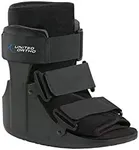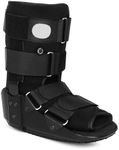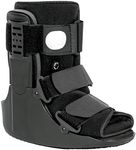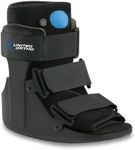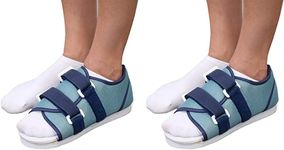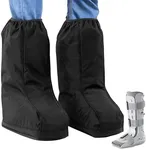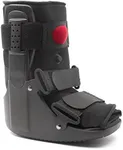Buying Guide for the Best Fracture Boots
When it comes to picking the right fracture boots, it's essential to consider several key specifications to ensure you get the best fit for your needs. Fracture boots, also known as walking boots or medical boots, are designed to protect and support your foot and ankle after an injury or surgery. The right boot can make a significant difference in your recovery process, so it's important to understand what to look for and how to choose the best one for you.Size and FitSize and fit are crucial when selecting a fracture boot. A well-fitting boot will provide the necessary support and comfort, while an ill-fitting one can cause additional pain and hinder your recovery. Fracture boots come in various sizes, typically ranging from small to extra-large. To find the right size, measure the length and width of your foot and compare it to the manufacturer's sizing chart. Ensure the boot fits snugly but not too tight, allowing for some swelling that may occur during the healing process. If you're between sizes, it's often better to go for the larger size to accommodate any swelling.
Support LevelThe level of support provided by a fracture boot is another important factor to consider. Support levels can vary from light to heavy, depending on the severity of your injury. Light support boots are suitable for minor injuries or post-surgical recovery, while moderate support boots are ideal for more significant injuries like fractures or severe sprains. Heavy support boots are designed for serious injuries and provide maximum stability and protection. Consult with your healthcare provider to determine the appropriate support level for your specific condition.
AdjustabilityAdjustability is a key feature in fracture boots, as it allows you to customize the fit and support according to your needs. Look for boots with adjustable straps or laces that can be tightened or loosened to accommodate swelling and ensure a secure fit. Some boots also come with inflatable air bladders that provide additional support and comfort by allowing you to adjust the pressure around your foot and ankle. The more adjustable the boot, the better it can adapt to changes in your condition during the healing process.
WeightThe weight of the fracture boot can impact your comfort and mobility. Lighter boots are generally more comfortable to wear and easier to walk in, making them suitable for less severe injuries or shorter recovery periods. Heavier boots, on the other hand, offer more stability and protection, which is essential for more serious injuries. Consider your daily activities and the extent of your injury when choosing the weight of your fracture boot. If you need to be mobile and active, a lighter boot may be more appropriate, while a heavier boot may be necessary for more severe injuries.
Sole TypeThe type of sole on a fracture boot can affect your balance and walking comfort. Fracture boots typically come with either a rocker sole or a flat sole. Rocker soles have a curved shape that helps promote a natural walking motion and reduce pressure on the heel and forefoot, making them ideal for those who need to stay mobile during recovery. Flat soles provide a more stable base and are better suited for individuals who need maximum support and stability. Consider your mobility needs and the advice of your healthcare provider when choosing the sole type.
Material and BreathabilityThe material and breathability of a fracture boot can influence your comfort, especially if you need to wear the boot for an extended period. Look for boots made from lightweight, breathable materials that allow air circulation to keep your foot cool and dry. Some boots also feature moisture-wicking linings that help prevent sweat buildup and reduce the risk of skin irritation. If you have sensitive skin or are prone to sweating, prioritize boots with good breathability and moisture management features.

